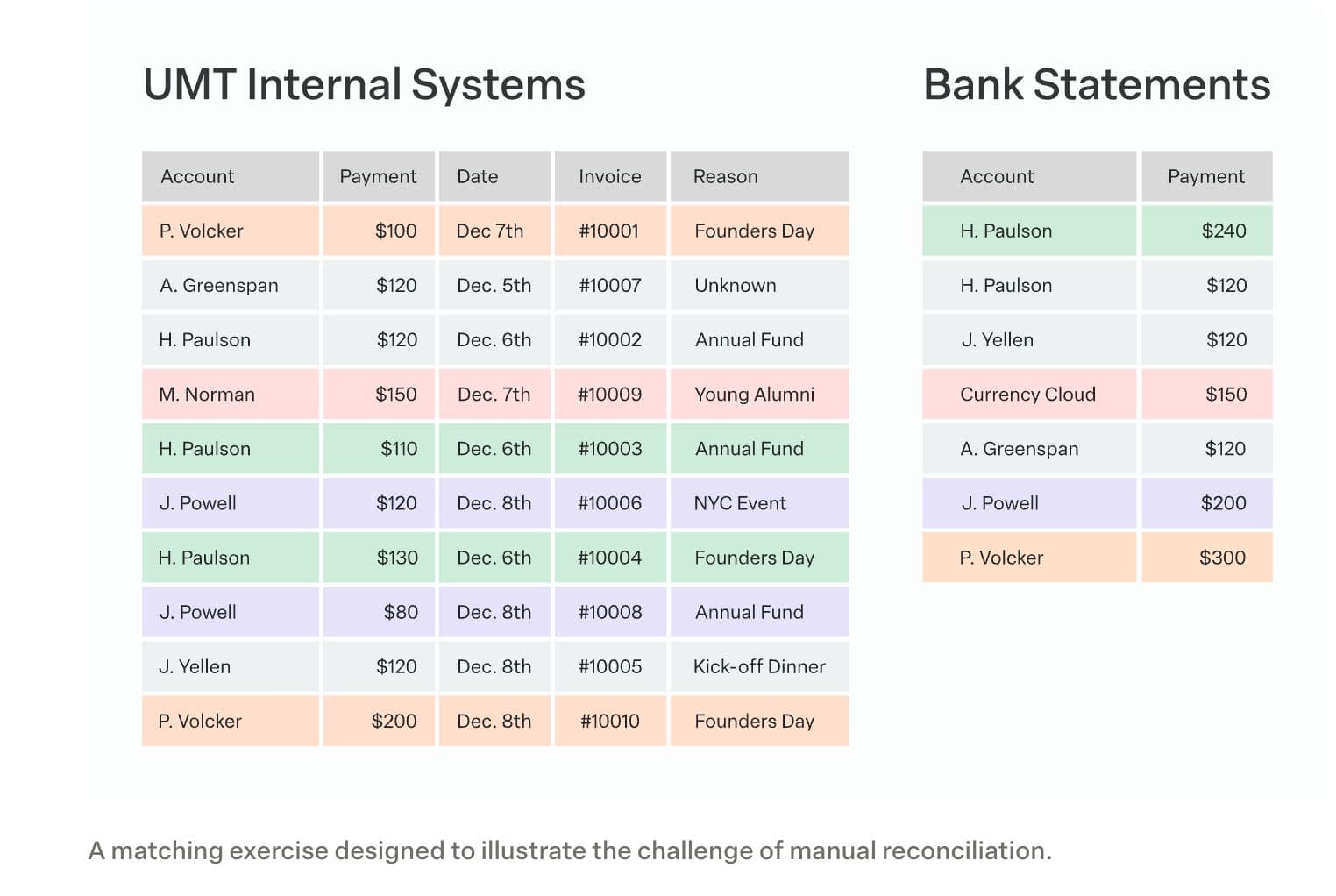Modern Treasury and Paxos Make It Easier for Businesses to Move Money with Stablecoins.Learn more →
What happens if bank reconciliation doesn’t balance?
If bank reconciliation doesn’t balance, an error of some kind is indicated—be it a numerical mistake, oversight, or duplication, a human error in comparison or adjustment, or a software problem. Companies might choose among several options for addressing the mismatch.
For unreconciled transactions, it may be necessary to revisit each step of the reconciliation process. A company may have to pull data again and compare each transaction. If their systems allow it, a business may choose to manually adjust a transaction (or multiple transactions) to rectify the situation.
The image below shows an example of bank reconciliation that has balanced, even though it’s difficult to identify 1:1 matches for each transaction. In this case the data represents a fictional university—the University of Modern Treasury (UMT)—trying to reconcile alumni donations by comparing internal records to a bank statement.

Learn more
Bank reconciliation is the process of verifying the completeness of a transaction through matching a company’s balance sheet to their bank statement.
Read more
The four steps in bank reconciliation are (1) accessing and comparing deposits between a company’s bank statement and its internal systems of record, (2) normalizing the bank statement as needed, (3) formatting of data from internal systems of record, and (4) comparing the bank statement and internal records to confirm a match.
The main purpose of bank reconciliation is to ensure that a company’s finances are correctly documented. Especially for companies that move money, this process helps guarantee product accuracy and correct internal bookkeeping.
Yes, bank reconciliation can be difficult, especially at scale. Primary difficulties stem from bank payment delays, the challenge of normalizing payments and bank data, and the need to match a high volume of transactions quickly.
To practice bank reconciliation, businesses may rely on manual processes, automating software, or some combination of the two. Regardless of process, bank reconciliation will always involved these four steps.
Read more
The three golden rules of accounting are (1) debit all expenses and losses, credit all incomes and gains, (2) debit the receiver, credit the giver, and (3) debit what comes in, credit what goes out.